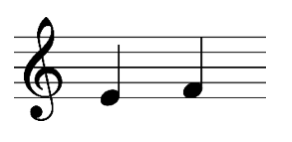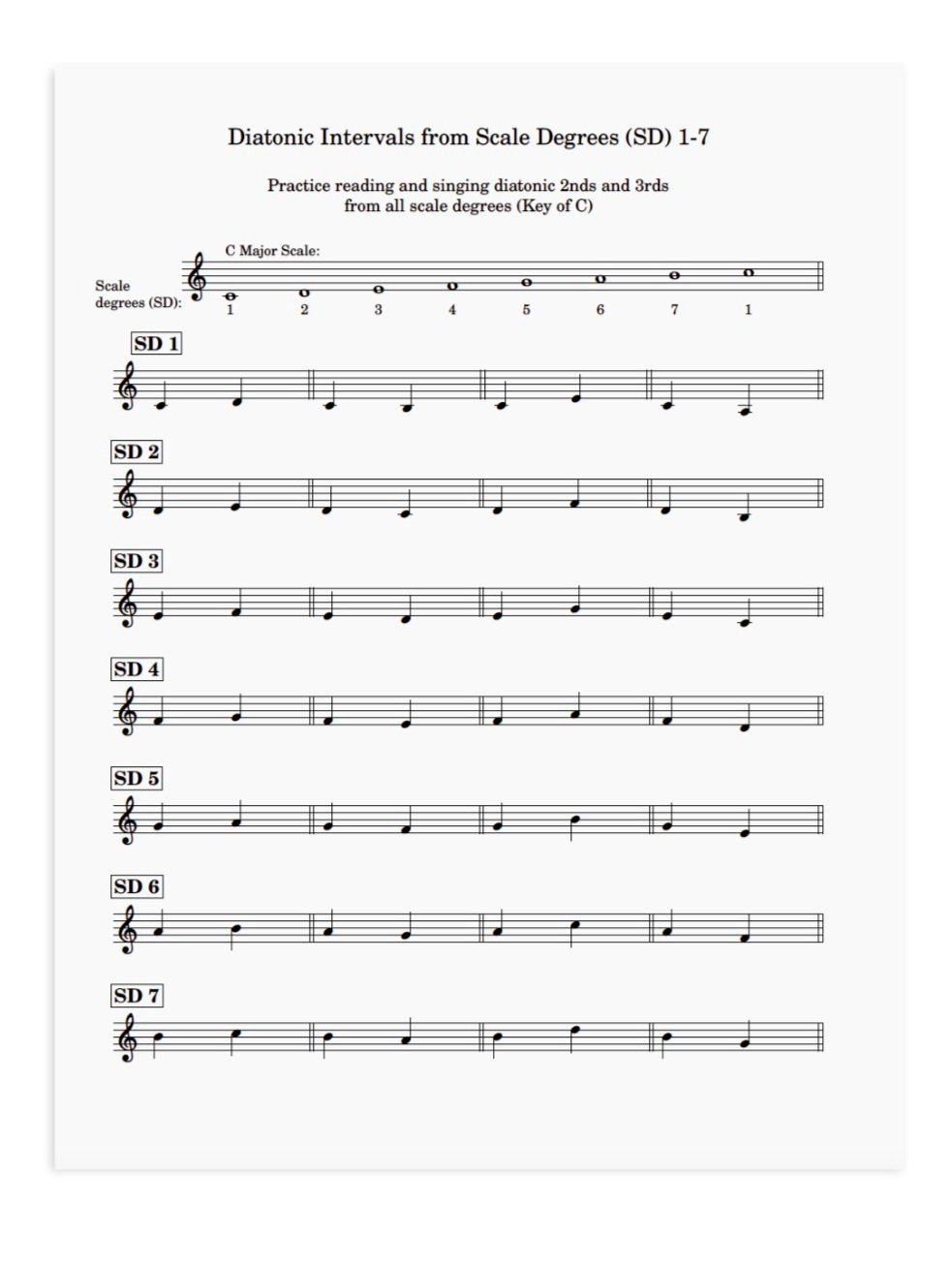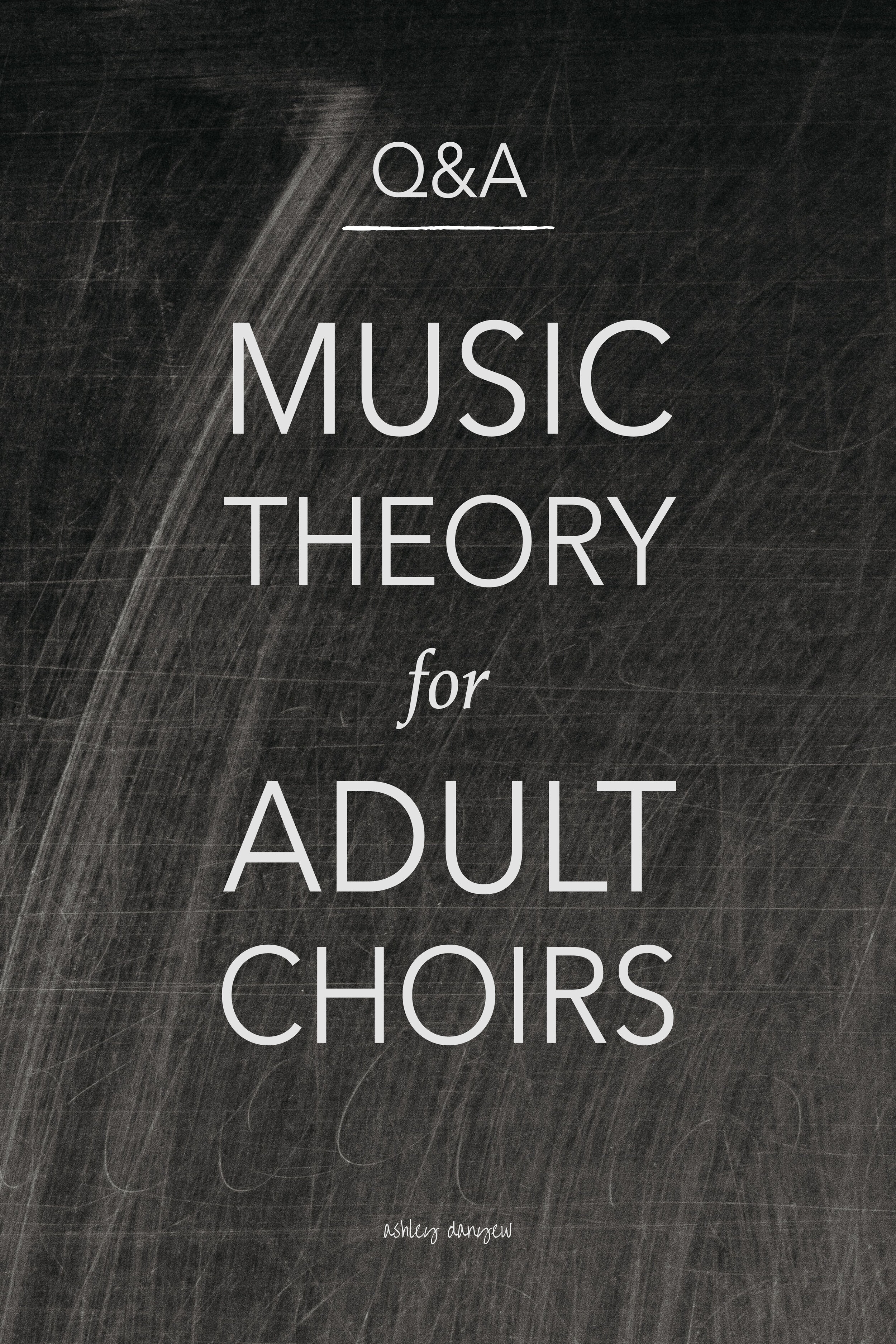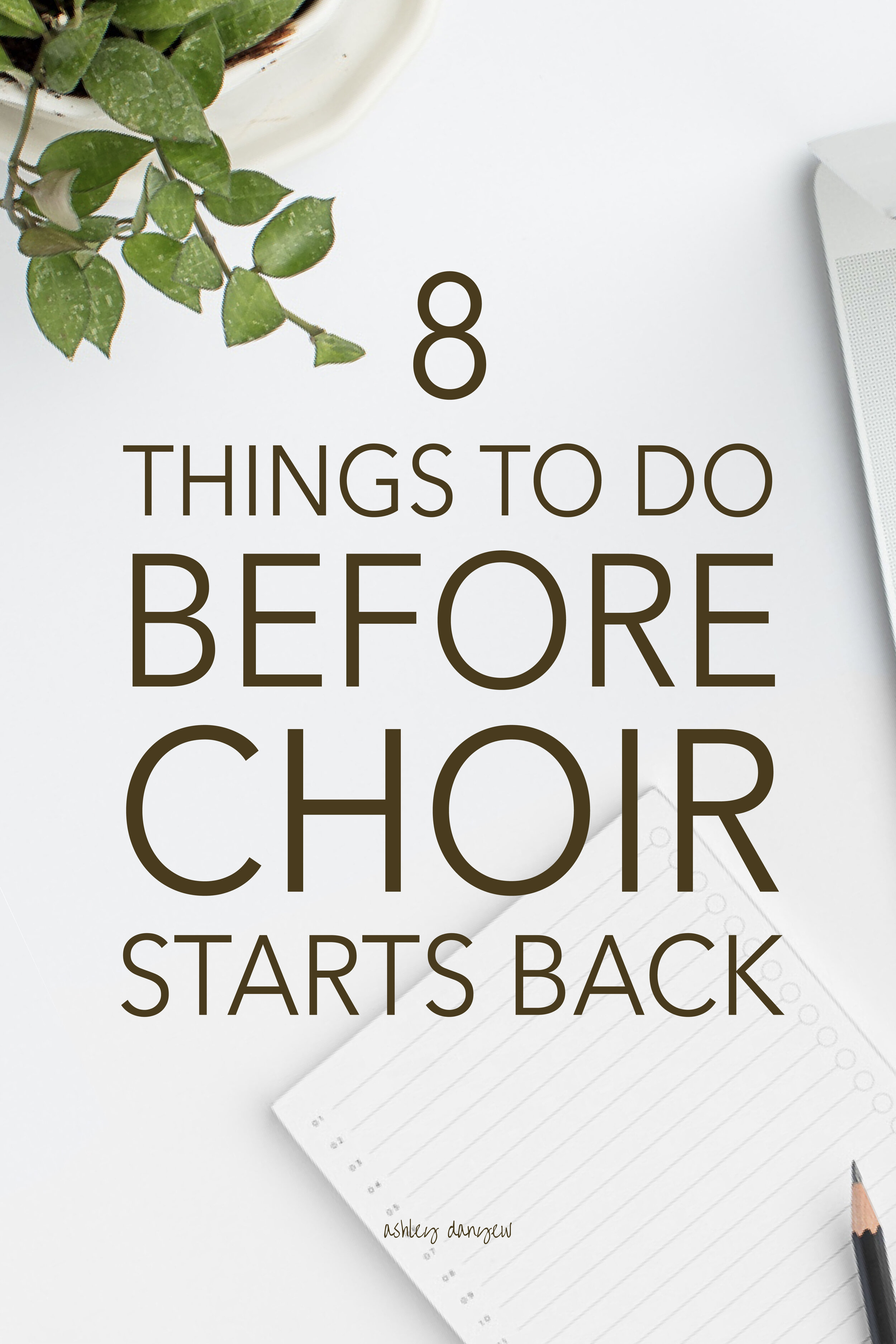Editor’s Note:
For those of you who work in a choral setting, you know that a big challenge is working with adults who don’t read music. How can you teach music-reading in a group setting when your rehearsal time is limited each week? How can you empower your adult singers to develop these skills on their own?
Doug Hanvey—a pianist, adult educator, and composer—has a few teaching tips (and a free printable resource) to share so you can help your adult singers learn to read more confidently and develop their sight-singing skills. Enjoy!
One of the most common challenges adult choir directors face is how to help singers with limited reading skills learn to follow a score and sing independently.
Many singers have learned (wisely!) to depend on their ears to learn new music. The problem with this is that they may rely on strong singers around them or hearing their part first before they can sing it. This may create lag within the ensemble and promote inconsistent entrances and cut-offs.
You may be surprised how many of your choir members have never learned the fundamentals of reading music, let alone how to sight-sing competently.
As a choir director, you may worry that teaching reading basics may seem condescending, that your singers won’t appreciate the value of learning the basics, or that they may doubt they can learn to be better readers. As a piano teacher, vocal accompanist, and musical theater director, I’ve found that with a little encouragement, adults who are (re)introduced to the rudiments of reading can gain the confidence to further develop their skills.
Adult Learning
It may help to tell your singers that adults can become good music readers as (and sometimes more) quickly than children. (While this may or may not be true for a specific individual, it at least helps to establish an expectation of success, and helps dispute any negative beliefs formed from previous attempts to become a better reader.)
With years of learning experiences behind them, most adults have also acquired an awareness of how they learn best. As a result, given motivation and committed practice, my experience is that most adults can become better readers within a few weeks or months.
Reading music is a complex skill and should be broken down into its basic components for effective learning. The two most fundamental aspects of reading music are 1) reading and recognizing notes and intervals on the staff and 2) reading rhythms.
In this article, I’ll focus on reading intervals.
The Fundamentals of Teaching Adult Singers to Read Music
Reading and Recognizing Music Intervals
Like instrumentalists, it is important for singers to recognize specific notes on the staff, but perhaps even more important to recognize intervals between consecutive notes.
Let’s start with a simple definition:
An interval is the distance between two notes or pitches (frequencies) in music.
I tell my piano students that reading by interval is the key to reading music well.
A good place to begin when teaching reading by interval is with the smallest intervals.
2nds (steps) vs. 3rds (skips)
The two most important small intervals are seconds or steps. Seconds or steps can be explained as the distance from a line note to the nearest space note or vice versa, as shown in Figure 1:
Figure 1: Interval of a 2nd (step)
Thirds or skips can be explained as the distance from a line note to the nearest line note, or a space note to the nearest space note, as shown in Figure 2:
Figure 2: Interval of a 3rd (skip)
Major Scale
Your singers can undoubtedly sing a major scale, but they may not recognize it on the staff. Explain it as a sequence of seven ascending steps (seconds), as shown in Figure 3. Initially, it may not be necessary to make the distinction between whole and half steps.
Figure 3: C Major Scale
Diatonic Intervals
After warming up by reading and singing the scale up and down, help your singers recognize the visual and aural difference between diatonic seconds and thirds (diatonic = notes within the scale).
In Figure 4, you can see the four ascending and descending diatonic seconds and thirds from scale degree (SD) 1 of the C Major Scale:
Figure 4: Diatonic Intervals Starting on C
Reading Interval Patterns
Have your choir sing these four diatonic intervals in sequence, as shown in Figure 4, then in different orders. Consider making letter-size flashcards (one measure per page) and displaying them in a mixed-up order on a board or music stand at the front of the room for all to see.
Combining visual information with an aural representation thereof, and having your choir engage in connecting the two, uses the primary adult learning styles: visual, aural, and kinesthetic (doing). This is a particularly effective approach for working with members of a group, each of whom is likely to have somewhat different learning styles.
Related post: 4 Strategies to Help Your Adult Choir Improve Their Sight-Reading Skills
Naturally, there are other challenges to reading music on the staff. But making sure the fundamentals are covered before moving on to those bigger challenges may be well worth taking some time away from the repertoire in rehearsals.
Free Resource
Music-Reading Handout
Download this practice handout and print it for your choir. Have your choir sing seconds and thirds up and down from each scale degree.
If you’d like your singers to better recognize and sing seconds and thirds in different keys, open the MuseScore file and transpose the exercises (Tools > Transpose)
Developing Music-Reading Skills at Home
Of course, there is only so much time in rehearsals for skill-building activities. Just as you expect your singers to practice repertoire at home, ask them to spend a few minutes at each home practice session working on their reading skills.
It might be most effective and helpful to make a recording of the practice handout as follows:
Say: “scale degree 1, ascending second”
Play or sing scale degree 1 (the first note of the interval)
Pause for singers to sing the interval starting from the given note
Play or sing the interval so singers can check their accuracy and practice as needed
Repeat for the other intervals
You may find that even if your singers are initially challenged or frustrated, ultimately, they will be grateful for your encouragement in becoming more secure and independent singers.
About the Author
Doug Hanvey is a pianist, teacher, and composer. He is the founder of Creative Keyboardist, which offers online piano lessons for adults. Doug holds a Master’s in Adult Education and is a member of the Music Teachers National Association in the United States.











































